
Apple A16 Bionic Benchmark, Test and specs
Last updated:
The Apple A16 Bionic has 6 CPU cores and can process 6 threads at the same time. The processor was presented in Q3/2022 and is based on the 16. Generation of the Apple A series series. In the Geekbench 5 benchmark, the Apple A16 Bionic achieved a result of 1,890 points (single-core) or 5,465 points (multi-core).

| Name: | Apple A16 Bionic |
|---|---|
| Family: | Apple A series (22) |
| CPU group: | Apple A16 (1) |
| Architecture: | A16 |
| Segment: | Mobile |
| Generation: | 16 |
| Predecessor: | Apple A15 Bionic (5-GPU) |
| Successor: | Apple A17 Pro |
CPU Cores and Base Frequency
The Apple A16 Bionic has 6 cores. The clock frequency of the Apple A16 Bionic is 3.46 GHz. An initial performance assessment can be made using the number of CPU cores.
| CPU Cores / Threads: | 6 / 6 |
|---|---|
| Core architecture: | hybrid (big.LITTLE) |
| A-Core: | 2x Everest |
| B-Core: | 4x Sawtooth |
| Hyperthreading / SMT: | No |
|---|---|
| Overclocking: | No |
| A-Core Frequency: | 3.46 GHz |
| B-Core Frequency: | 2.02 GHz |
Artificial Intelligence and Machine Learning
Processors with the support of artificial intelligence (AI) and machine learning (ML) can process many calculations, especially audio, image and video processing, much faster than classic processors. Algorithms for ML improve their performance the more data they have collected via software. ML tasks can be processed up to 10,000 times faster than with a classic processor.
| AI hardware: | Apple Neural Engine |
|---|---|
| AI specifications: | 16 Neural cores @ 17 TOPS |
Internal Graphics
The Apple A16 Bionic has an integrated graphics that the system can use to efficiently play back videos. The Apple A16 Bionic has the Apple A16 (5 GPU Cores) installed, which has 20 streaming multiprocessors (640 shaders).
| GPU name: | Apple A16 (5 GPU Cores) |
|---|---|
| GPU frequency: | 1.34 GHz |
| GPU (Turbo): | No turbo |
| Compute units: | 20 |
| Shader: | 640 |
| Hardware Raytracing: | No |
| Release date: | Q3/2022 |
| Max. displays: | 3 |
|---|---|
| Generation: | 13 |
| Direct X: | -- |
| Technology: | 4 nm |
| Max. GPU Memory: | 6 GB |
| Frame Generation: | No |
Hardware codec support
Processors with integrated graphics can process video codecs faster. Support for modern codecs can significantly increase system efficiency during video playback.
| h265 / HEVC (8 bit): | Decode / Encode |
|---|---|
| h265 / HEVC (10 bit): | Decode / Encode |
| h264: | Decode / Encode |
| VP8: | Decode / Encode |
| VP9: | Decode / Encode |
| AV1: | No |
|---|---|
| AVC: | Decode |
| VC-1: | Decode |
| JPEG: | Decode / Encode |
Memory & PCIeThe Apple A16 Bionic supports a maximum of 6 GB memory. Depending on the mainboard, the processor can use a maximum of 1 (Single Channel) memory channels. This results in a maximum bandwidth of the main memory of 51.2 GB/s. |
|
| Memory type: | Memory bandwidth: |
|---|---|
| LPDDR5-6400 | 51.2 GB/s |
| Max. Memory: | 6 GB |
| Memory channels: | 1 (Single Channel) |
| ECC: | No |
| PCIe: | |
| PCIe Bandwidth: | -- |
Thermal ManagementThe Apple A16 Bionic has a TDP of 7.25 W. Based on the TDP, the system manufacturer can and must adapt the cooling solution to the processor. |
|
|---|---|
| TDP (PL1 / PBP): | 7.25 W |
| TDP (PL2): | -- |
| TDP up: | -- |
| TDP down: | -- |
| Tjunction max.: | -- |
Technical details
Modern production reduces the waste heat of a processor and increases its efficiency. The Apple A16 Bionic is made in 4 nm and has 44.00 MB cache.
| Technology: | 4 nm |
|---|---|
| Chip design: | Chiplet |
| Socket: | -- |
| L2-Cache: | 20.00 MB |
| L3-Cache: | 24.00 MB |
| AES-NI: | No |
| Operating systems: | iOS |
| Virtualization: | None |
|---|---|
| Instruction set (ISA): | Armv8.6-A (64 bit) |
| ISA extensions: | -- |
| Release date: | Q3/2022 |
| Release price: | -- |
| Part Number: | -- |
| Documents: | -- |
Rate this processor
Benchmark results

The benchmark results for the Apple A16 Bionic have been carefully checked by us. We only publish benchmark results that have been created by us or that have been submitted by a visitor and then checked by a team member. All results are based on and fullfill our benchmark guidelines.
Screenshots:
Screenshots:
- Geekbench 5.4.4 (6 GB LPDDR5), iOS 16
- Geekbench 5.4.4 on Apple iPhone 14 Pro (6 GB LPDDR5), iOS 16
- AnTuTu v9.1.2 on Apple iPhone 14 Pro (iOS 16)
- Geekbench 6.0.0 on Apple iPhone 14 Pro (iOS 16)
Geekbench 5, 64bit (Single-Core)
Geekbench 5 is a cross plattform benchmark that heavily uses the systems memory. A fast memory will push the result a lot. The single-core test only uses one CPU core, the amount of cores or hyperthreading ability doesn't count.
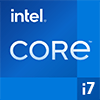
|
Intel Core i7-13700H
14C 20T @ 5.00 GHz |
||

|
Intel Core i7-13705H
14C 20T @ 5.00 GHz |
||

|
Intel Core i7-13800HE
14C 20T @ 5.00 GHz |
||
|
|
Apple A16 Bionic
6C 6T @ 3.46 GHz |
||

|
Intel Core i7-13700HX
16C 24T @ 5.00 GHz |
||
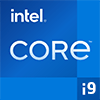
|
Intel Core i9-12900T
16C 24T @ 4.90 GHz |
||

|
Intel Core i7-11700B
8C 16T @ 5.30 GHz |
||
Geekbench 5, 64bit (Multi-Core)
Geekbench 5 is a cross plattform benchmark that heavily uses the systems memory. A fast memory will push the result a lot. The multi-core test involves all CPU cores and taks a big advantage of hyperthreading.
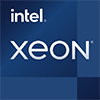
|
Intel Xeon E5-1660 v2
6C 12T @ 3.80 GHz |
||

|
Intel Xeon E5-2618L v3
8C 16T @ 2.90 GHz |
||
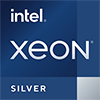
|
Intel Xeon Silver 4110
8C 16T @ 2.60 GHz |
||
|
|
Apple A16 Bionic
6C 6T @ 3.46 GHz |
||

|
Intel Core i7-9700T
8C 8T @ 3.20 GHz |
||

|
Intel Core i7-9850HE
6C 12T @ 2.70 GHz |
||

|
AMD Ryzen 5 5600U
6C 12T @ 3.60 GHz |
||
Geekbench 6 (Single-Core)
Geekbench 6 is a benchmark for modern computers, notebooks and smartphones. What is new is an optimized utilization of newer CPU architectures, e.g. based on the big.LITTLE concept and combining CPU cores of different sizes. The single-core benchmark only evaluates the performance of the fastest CPU core, the number of CPU cores in a processor is irrelevant here.

|
Intel Core i7-13700T
16C 24T @ 4.90 GHz |
||

|
Intel Core i7-1370P
14C 20T @ 5.20 GHz |
||

|
Intel Core i7-13700HX
16C 24T @ 5.00 GHz |
||
|
|
Apple A16 Bionic
6C 6T @ 3.46 GHz |
||

|
Intel Core i7-13700H
14C 20T @ 5.00 GHz |
||

|
Intel Core i7-13705H
14C 20T @ 5.00 GHz |
||

|
Intel Core i9-13905H
14C 20T @ 5.40 GHz |
||
Geekbench 6 (Multi-Core)
Geekbench 6 is a benchmark for modern computers, notebooks and smartphones. What is new is an optimized utilization of newer CPU architectures, e.g. based on the big.LITTLE concept and combining CPU cores of different sizes. The multi-core benchmark evaluates the performance of all of the processor's CPU cores. Virtual thread improvements such as AMD SMT or Intel's Hyper-Threading have a positive impact on the benchmark result.
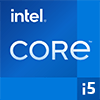
|
Intel Core i5-10400F
6C 12T @ 4.00 GHz |
||

|
Intel Core i9-9900T
8C 16T @ 3.60 GHz |
||

|
Intel Core i5-11500T
6C 12T @ 3.30 GHz |
||
|
|
Apple A16 Bionic
6C 6T @ 3.46 GHz |
||

|
Intel Core i7-1250U
10C 12T @ 2.50 GHz |
||

|
Intel Core i7-1260U
10C 12T @ 2.10 GHz |
||

|
Intel Xeon E-2276M
6C 12T @ 2.80 GHz |
||
iGPU - FP32 Performance (Single-precision GFLOPS)
The theoretical computing performance of the internal graphics unit of the processor with simple accuracy (32 bit) in GFLOPS. GFLOPS indicates how many billion floating point operations the iGPU can perform per second.

|
AMD Ryzen 7 3700U
AMD Radeon RX Vega 10 (Raven Ridge) @ 1.40 GHz |
||

|
AMD Ryzen 7 3750H
AMD Radeon RX Vega 10 (Raven Ridge) @ 1.40 GHz |
||

|
AMD Ryzen 7 PRO 3700U
AMD Radeon RX Vega 10 (Raven Ridge) @ 1.40 GHz |
||
|
|
Apple A16 Bionic
Apple A16 (5 GPU Cores) @ 1.34 GHz |
||
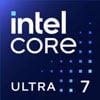
|
Intel Core Ultra 7 164U
Intel Iris Xe 4 Core Graphics 64 EUs (Meteor Lake) @ 1.80 GHz |
||
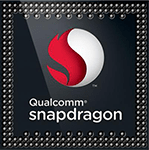
|
Qualcomm Snapdragon 7+ Gen 2
Qualcomm Adreno 725 @ 0.58 GHz |
||

|
AMD Ryzen 5 2400GE
AMD Radeon RX Vega 11 (Raven Ridge) @ 1.25 GHz |
||
AnTuTu 9 Benchmark
The AnTuTu 9 benchmark is very well suited to measuring the performance of a smartphone. AnTuTu 9 is quite heavy on 3D graphics and can now also use the "Metal" graphics interface. In AnTuTu, memory and UX (user experience) are also tested by simulating browser and app usage. AnTuTu version 9 can compare any ARM CPU running on Android or iOS. Devices may not be directly comparable when benchmarked on different operating systems.
In the AnTuTu 9 benchmark, the single-core performance of a processor is only slightly weighted. The rating is made up of the multi-core performance of the processor, the speed of the working memory, and the performance of the internal graphics.
In the AnTuTu 9 benchmark, the single-core performance of a processor is only slightly weighted. The rating is made up of the multi-core performance of the processor, the speed of the working memory, and the performance of the internal graphics.

|
MediaTek Dimensity 9000
8C 8T @ 3.05 GHz |
||

|
Qualcomm Snapdragon 7+ Gen 2
8C 8T @ 2.91 GHz |
||

|
Qualcomm Snapdragon 8 Gen 1
8C 8T @ 3.00 GHz |
||
|
|
Apple A16 Bionic
6C 6T @ 3.46 GHz |
||
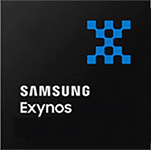
|
Samsung Exynos 2200
8C 8T @ 2.80 GHz |
||

|
Google Tensor G3
8C 8T @ 2.91 GHz |
||

|
Qualcomm Snapdragon 888+
8C 8T @ 3.00 GHz |
||
Performance for Artificial Intelligence (AI) and Machine Learning (ML)
Processors with the support of artificial intelligence (AI) and machine learning (ML) can process many calculations, especially audio, image and video processing, much faster than classic processors. The performance is given in the number (trillions) of arithmetic operations per second (TOPS).

|
Qualcomm Snapdragon 888
8C 8T @ 2.84 GHz |
||

|
Apple M1 Ultra (48-GPU)
20C 20T @ 0.60 GHz |
||

|
Apple M1 Ultra (64-GPU)
20C 20T @ 0.60 GHz |
||
|
|
Apple A16 Bionic
6C 6T @ 3.46 GHz |
||

|
AMD Ryzen 7 PRO 8840U
8C 16T @ 3.30 GHz |
||

|
AMD Ryzen 5 PRO 8640HS
6C 12T @ 3.50 GHz |
||

|
AMD Ryzen 5 PRO 8645HS
6C 12T @ 4.30 GHz |
||
Benchmarks

Geekbench 5 (SC)
2,488 entries
2,488 entries

Geekbench 5 (MC)
2,461 entries
2,461 entries

Geekbench 6 (SC)
1,755 entries
1,755 entries

Geekbench 6 (MC)
1,703 entries
1,703 entries

FP32 SP (iGPU)
2,042 entries
2,042 entries

AnTuTu 9 Benchmark
90 entries
90 entries

AI / ML Performance
119 entries
119 entries
News and articles for the Apple A16 Bionic
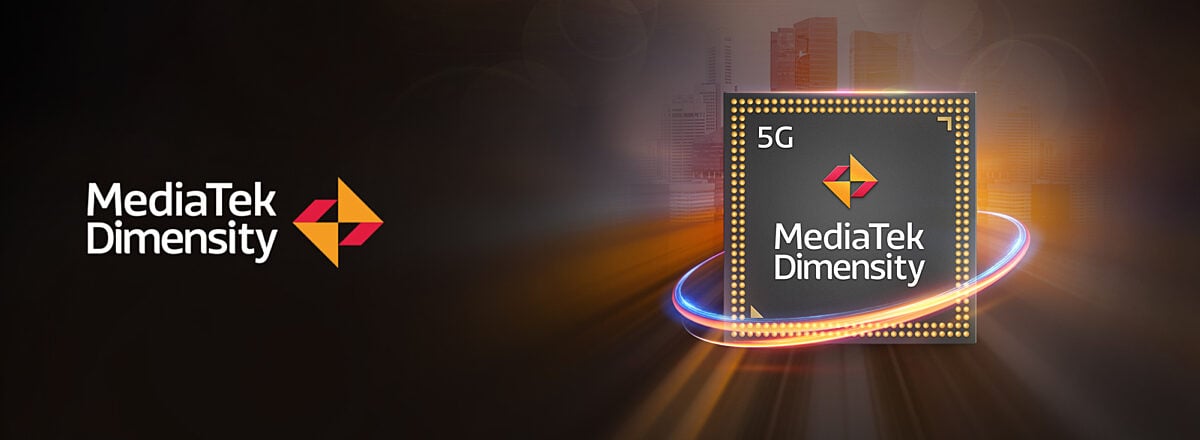
MediaTek Dimensity 9000+ vs Apple A16 and Snapdragon 8+ Gen 1
Posted by Stefan on 2022-09-22
With the Dimensity 9000+, Mediatek presents the latest of its smartphone chips. The successor to the Mediatek Dimensity 9000 achieves higher CPU and GPU clock frequencies thanks to better binning. The CPU clock of the prime core (A core) increases from 3.0 to 3.2 GHz. And the ARM Mali-G710 MP10 GPU can now clock at 0.9 GHz (previously 0.85 GHz).
Both are a good improvement over the Dimensity 9000 in theory but the increase in performance should not usually be noticeable in practice. In the end, the overall performance of the Mediatek Dimensity 9000+ is impressive: Qualcomm Snapdragon 8+ Gen 1 is beaten in Geekbench 5 in both the single-core and multi-core benchmarks.
Both are a good improvement over the Dimensity 9000 in theory but the increase in performance should not usually be noticeable in practice. In the end, the overall performance of the Mediatek Dimensity 9000+ is impressive: Qualcomm Snapdragon 8+ Gen 1 is beaten in Geekbench 5 in both the single-core and multi-core benchmarks.

What we know about the new Apple A16 Bionic in Apples iPhone 14
Posted by Stefan on 2022-08-23
Every year Apple releases a new iPhone series and with the release of the series always the latest Apple A processor. This has become even more important in recent years, as it has also formed the basis for Apple's M processor series since 2020. The Apple M processors are based on the same core architecture as the Apple A processors, but have been significantly upgraded in many areas such as memory bandwith, amount of memory or cache.
Description of the processor
The Apple A16 Bionic was introduced at the Apple Keynote in September 2022, where it was used in the Apple iPhone Pro 14. The processor is manufactured using the 4-nanometer process and is based on a hybrid big.LITTLE architecture, with the 6 processor cores being divided into 2 high-performance cores and 4 efficient cores. The high-performance cores clock at 3.46 gigahertz and the efficiency cores at 2.02 gigahertz. Compared to the predecessor, the Apple A15 Bionic with 5 GPU cores, only the clock frequency of the high-performance cores has been increased by 0.23 gigahertz, the clock frequency of the efficient cores is identical. Hyperthreading is not supported by the processor and overclocking of the processor is also not possible.The processor achieves a single-core value of 1890 points and a multi-core value of 5355 points in the Geekbench 5 benchmark, making it around 10 percent faster than the Apple A15 Bionic.
The internal graphics unit has been improved compared to the predecessor. On the one hand, it is manufactured using the 1 nanometer smaller 4-nanometer process and, on the other hand, the clock frequency is 0.10 gigahertz higher than the Apple A15 Bionic with 5 GPU cores. The GPU has 160 execution units with 1280 shakers and the maximum GPU memory is specified as 8 gigabytes. The GPU of the Apple A16 Bionic achieves a FP32 (single precision) processing power of 2 teraflops and is thus significantly faster than the GPU of the predecessor, which had an FP32 processing power of only 1.5 teraflops.
The Apple A16 Bionic has 6 gigabytes of LPDDR5-6400 RAM installed. The main memory achieves a bandwidth of 51.2 gigabytes / second via the one existing memory channel. There was also an update to the Apple A15 Bionic, which is also equipped with 6 gigabytes of RAM, but the slightly older and slower LPDDR4X-4266 RAM is installed here.
Popular comparisons
back to index





